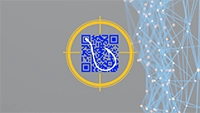Today, everything is automated. Our daily routines, our responses to simple questions such as “how was your day,” the train you take to get to work, the sell price for stocks – all automated. But even with those examples provided, how many of those functions are truly automated to where no human interaction or intervention is required?
Similar to the buzz-worthiness of AI, the term “automation” has become a catch-all marketing term for email security companies. It sounds good, so clearly every company has begun to make reference to such capabilities. But the truth is, not all email security solutions are automated to the extent at which they are positioned to be.
For example, several of our competitors technologies rely on YARA rules and playbooks; both of which introduce elements of automation but aren’t fully automated because human involvement is required to facilitate a response. Other than being misleading, such false positioning can be dangerous for companies that rely on such solutions because security teams can be lured into a false sense of security and miss critical threats that require response in real-time. .
So, how can you tell if an email security solution is inherently automated?
Here are 3 features and functionalities to look for:
Automated Incident Investigation
A truly automated email security solution should use real-time proprietary analysis and orchestration to investigate all messages. Using internal and external threat intel resources such as sandbox, multi-AV engines, email meta data and crowd intelligence, an automated solution should be able to identify threats and quickly recognize known attacks. This investigative step removes the need for any additional tools by SOC and security teams to manually investigate every potential phishing incident including false positives and spam. With less than 80 seconds before the first click, partially automated solutions, such as those reliant on templated playbooks, are inefficient at reducing risk and cannot empower SOC teams when time from identification to remediation is of the essence.
Automated Triage
A truly automated email security solution should be able to prioritize suspicious emails according to threat severity and subsequently cluster all message types into categories, such as phishing messages, spam messages, and false positives. The solution should also be able to filter messages by the inboxes those messages went to, the reputation of the source, and be able to identify whether or not the messages were actually opened. At its most basic function, an automated email security solution should be able to provide these details triaged for the SOC and IT security teams to classify with one click, saving valuable time while continuing to learn and adapt independently.
Automated Remediation
Rounding out a fully automated email security solution is the ability to take action on suspicious messages autonomously – whether the message is deemed safe or needs to be removed. In fact, a truly automated solution learns and adapts as more data is fed into its decision-making matrix, maximizing an organizations ability to stay safe from evolving threats. Additionally, a fully automated solution must be able to initiate remediation automatically or with one-click, removing all affected mailboxes across the entire organization while communicating the attack with existing SIEM and SOAR solutions.
AI Powered vs Scripts and Tools
Many email security and phishing mitigation providers position scripts and playbooks as an automated solution. While these tools do have pieces of automation built in, the solutions still require a significant amount of work from the security team and are much less productive and adaptive. That said, humans can’t be written out of the process entirely. That’s because humans can still help improve the automation inherent to machines – especially when it comes to interpreting intent and training the algorithms on the latest threats.
The Caveat – Humans & Machines Can Still Work Together
In a recent report, a Gartner analyst wrote:
“We can't escape the fact that humans and machines complement each other and together they can outperform each alone. ML reaches out to humans for assistance to address intent uncertainty. ML aids humans by supporting administrator awareness and providing assistance to higher-tier SOC analysts.”
Believing this to be true, our advanced email threat protection platform automates processes that SOC and security teams don’t need to be involved in. IronTraps provides email investigation and clustering while Themis provides automated guidance and response as defined by internal policies.
But with our platform, we understand that automation shouldn’t be relied upon to make every decision because despite the accuracy of artificial intelligence, a verified human analyst is still needed to help it learn and become smarter. That’s why we argue human intelligence combined with automation, AI and machine learning to create the strongest email security platform that provides true automation.
We simply believe that the human intelligence shouldn’t have to focus on the tasks AI can handle.
If you’re ready to implement a truly automated security solution for your organization’s email, get in touch with us today.

January 1, 2019












